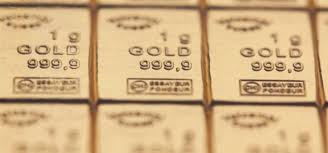All You Need To Know About Gold ETF (4)

Fund costs
Gold ETFs have very cheap trading fees, typically 0.3% to 0.4%, compared to an average of 2% for other gold investment channels. The cost advantage is outstanding. Fund fees for gold ETFs are primarily divided into daily fund operating expenses and fund management fees. In the case of GLD, for example, the fund's contract stipulates that the fees paid to the promoter are to compensate it for maintaining the fund's website and marketing expenses. . Originator's fee is based on adjusted net asset value at an annualized rate of 0.15 per cent, calculated daily and accumulated monthly and deferred. One monthly payment. Custodian's fee is based on adjusted net asset value at an annualized rate of 0.02%, calculated daily, accrued monthly and deferred One monthly payment. At the same time, the minimum annual fee is $500,000 and the maximum cannot exceed $2 million. Fees paid to the Fund Custodian are made through a retained gold bullion account agreement. Under the agreement, the custodian fee is based on the average daily balance of gold deposited in the TAA and TAU accounts at 0.10 percent The annualized rate is calculated daily and accrued quarterly and deferred.
Transactions
As the founder of the Gold ETF, Dr. James Burton, CEO of the World Gold Council, defines it as a new gold investment product that is consigned by a major international gold producer to a fund company, which is then publicly offered by the fund company on the stock exchange, and sold directly to various types of investors, including institutional and individual investors, in the form of a fund relying on physical gold, with the designated commercial bank acting as the fund custodian and physical depository respectively, and which investors are free to redeem at any time.
Gold ETFs are open-ended investment funds that are continuously quoted and freely traded during trading hours. The market's judgment to redeem at any size. Despite being listed on different exchanges around the world, there are no substantial differences between the four ETFs, except that the issuing companies, funds of There is a slight difference between a custodian and a physical custodian. Take, for example, the gold ETF listed on the New York Stock Exchange (trading symbol: GLD), which is made up of The streetTRACKSGoldShares Fund is directly listed for distribution, with the physical gold behind it relied upon by the Its purchase from Newmont Gold Group. Each gold ETF share issued represents 1/10th of an ounce (equal to approximately 3.1 grams) of physical gold, with a minimum order size of 1 share. The custodian of the ETF is the Bank of New York, which is responsible for the day-to-day management of the fund, and the physical custodian is HSBC, which is responsible for the custody of each share The physical gold behind ETFs. The difference between a gold ETF listed on the London Stock Exchange (ticker symbol: GBS) and a gold ETF listed on the London Stock Exchange is the issuer and the custodian. Different from the bank, the issuer of GBS is GoldBullionSecurities Fund Inc. It is hosted by UBS Bank in Switzerland.
According to the World Gold Council, as of March 31, 2006, the number of listed companies in the United States, United Kingdom, Australia and South Africa The total trading volume of gold ETFs has reached 437.65 tons with a value of $8.94 billion. Among them, the gold ETFs listed on the New York Stock Exchange and the London Stock Exchange were the most active, with a trading volume of 347.5 million shares each. 82 tons and 70.5 tons of gold, with a total value of $6.506 billion and $1.325 billion, respectively. The advantages of gold ETFs and the reasons for their success As a new, simple, efficient and safe way to invest in gold. There are two main reasons why gold ETFs have been able to quickly gain market acceptance in a short period of time.







